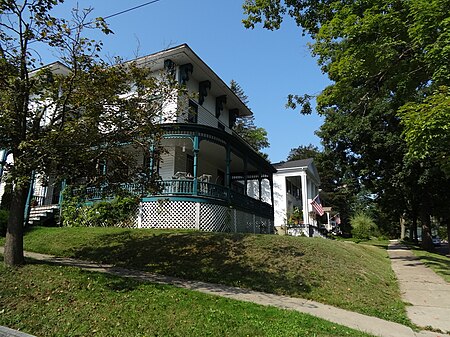Southside Historic District (Corning, New York)

Southside Historic District is a national historic district located at Corning, Steuben County, New York. The district encompasses 624 contributing buildings, one contributing site and four contributing objects in a predominantly residential section of Corning. The district developed after 1835 and includes notable examples of Federal, Greek Revival, and Victorian architecture. Located in the district is the separately listed World War Memorial Library. Other notable buildings include the Steuben County Courthouse designed by J. Foster Warner, the "Voting Booth" (c. 1893-1898), Corning Free Academy (1922), the First United Methodist Church of Corning and Christ Episcopal Church.It was listed on the National Register of Historic Places in 1998.
Excerpt from the Wikipedia article Southside Historic District (Corning, New York) (License: CC BY-SA 3.0, Authors, Images).Southside Historic District (Corning, New York)
Pine Street,
Geographical coordinates (GPS) Address Nearby Places Show on map
Geographical coordinates (GPS)
| Latitude | Longitude |
|---|---|
| N 42.139166666667 ° | E -77.055833333333 ° |
Address
Pine Street 201
14830
New York, United States
Open on Google Maps









